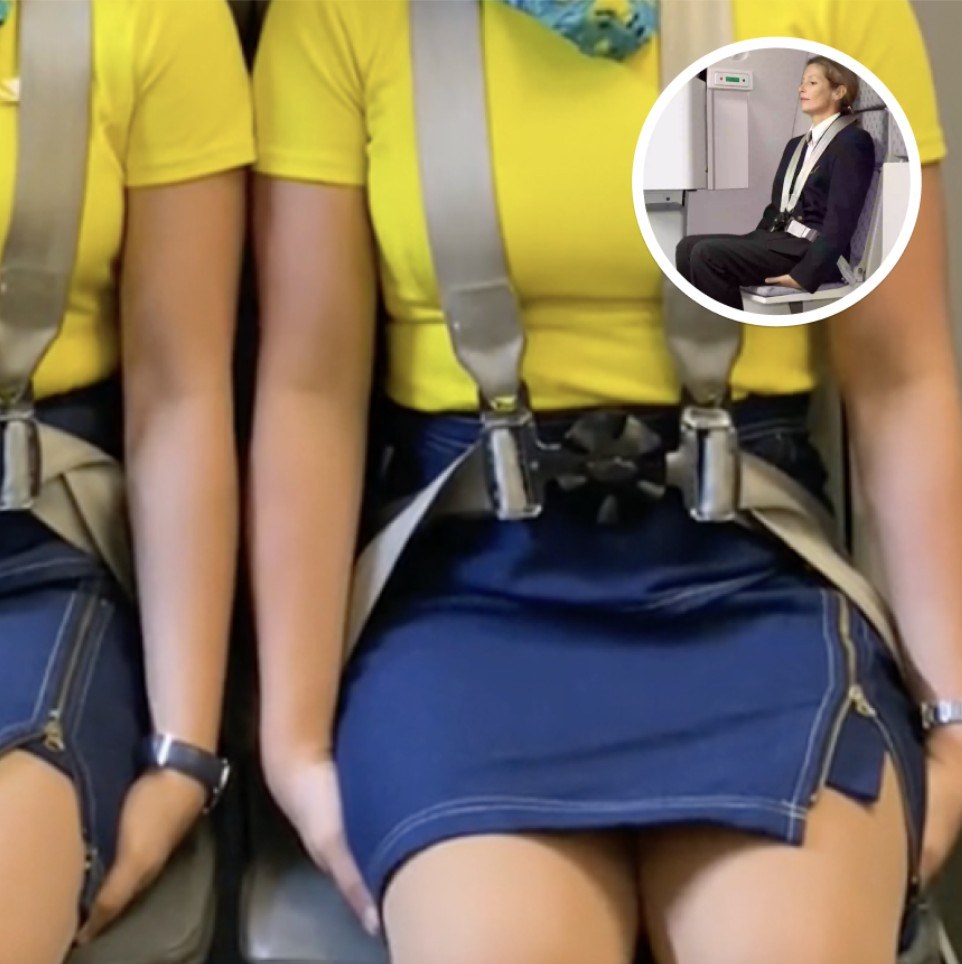If you’ve ever glanced at a flight attendant during takeoff or landing and noticed them sitting upright with their hands tucked neatly beneath their thighs, you might have wondered what exactly they’re doing. At first glance, it may seem like a quirky habit or even a way to stay warm in the cool cabin air—but the truth is far more serious. That posture is part of a carefully practiced safety routine designed to minimize injuries in the event of an emergency.
This position is known in aviation as the brace position, and it’s one of the most critical safety protocols for flight crews during takeoff and landing—statistically the most dangerous phases of any flight. Far from being passive passengers, flight attendants are trained to remain vigilant and physically prepared for emergencies at all times.
Cebu Pacific Airlines flight attendant Henny Lim recently offered insight into this posture, sharing with PEOPLE that the hands-under-thighs technique is a crucial element of crew safety. “The goal is to secure the body in a stable, controlled position,” Lim explained. “By sitting upright with palms facing up and tucked under the thighs, we prevent the arms from flailing during an impact. It reduces the risk of broken limbs or further injury in case of turbulence or a crash.”
Along with arm positioning, the brace position includes sitting straight with the spine aligned and both feet firmly planted on the floor. This alignment helps the body absorb shock in a more controlled way, increasing the likelihood that flight attendants remain uninjured—and therefore able to assist others—if something goes wrong.
Anusha Pratima, another flight attendant, added further context in a Quora thread, explaining that this isn’t just about personal safety. During taxi, takeoff, and landing, cabin crew are on high alert. They must be physically and mentally ready to jump into action within seconds. The brace position, she says, “reduces spinal and limb injury, allowing us to recover quickly if we need to evacuate or assist passengers.”
Interestingly, passengers are taught a slightly different method of bracing during emergencies. Aviation experts from Simple Flying recommend that passengers lean forward, rest their head against the seat in front, and place both hands flat on either side of their head. This variation protects the neck and upper spine in a way that accounts for seat placement and passenger posture.
So the next time you board a plane and spot a flight attendant seated in that peculiar position—hands tucked, posture stiff, eyes alert—remember this: it’s not a quirk, and it’s definitely not about comfort. It’s a technique rooted in decades of aviation safety research, designed to protect the very people trained to protect you.
Flight attendants may be smiling during beverage service or helping with overhead bags, but when they sit in the jump seat and assume the brace position, they’re carrying out one of the most serious responsibilities in the sky: being ready for the worst so others have a better chance at the best outcome.
What seems like a small, silent moment of stillness is actually a powerful act of preparation. One that could mean the difference between chaos and calm when seconds matter most.
